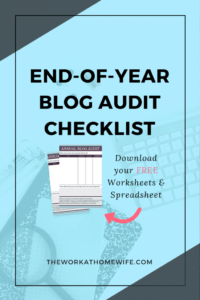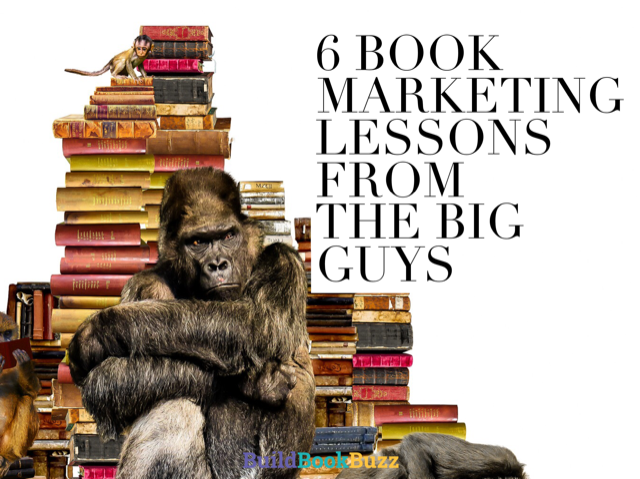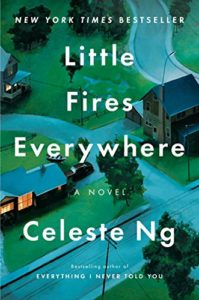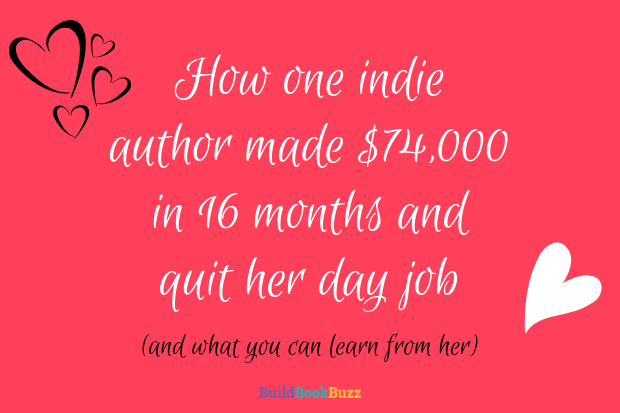 Romance writer Jami Albright, a "born and raised Texas girl," is the multiple award-winning author of The Brides on the Run series--a fun, sexy, snarky, laugh-out-loud good time. After I met Jami when I spoke at the Lone Star Conference two years ago, we connected on Facebook. I've enjoyed watching her soar, and when she recently announced that she had quit her day job to write full-time, I knew we needed to learn more. I hope her story inspires you. Learn more about Jami on her website.
Romance writer Jami Albright, a "born and raised Texas girl," is the multiple award-winning author of The Brides on the Run series--a fun, sexy, snarky, laugh-out-loud good time. After I met Jami when I spoke at the Lone Star Conference two years ago, we connected on Facebook. I've enjoyed watching her soar, and when she recently announced that she had quit her day job to write full-time, I knew we needed to learn more. I hope her story inspires you. Learn more about Jami on her website.
How one indie author made $74,000 in 16 months and quit her day job (and what you can learn from her)
By Jami Albright This is the story of how I was able to quit my job and become a full-time romance writer. ]]>How one indie author made $74,000 in 16 months and quit her day job (and what you can learn from her)
By Jami Albright
This is the story of how I was able to quit my job and become a full-time romance writer.
I published my first book, Running From a Rock Star, in April 2017. The book launched to 1,381 in the Kindle Store and stayed in the top 5,000 for six months until book two, Running With a Sweet Talker, released in October 2017. That book launched to 696 in the Kindle store.
As of the day I’m writing this, Running From a Rock Star is ranked 3,949, Running With a Sweet Talker
is at 6,591 in the Kindle Store, and I’ve grossed $74,000, which includes audiobook sales.
I quit my day job
Due to the success of both books, last December I made the decision to quit my day job to write full-time.
Are you doing the math? Or are you like me, and you don’t math?
That’s okay. I’ll break it down for you. I didn’t release book two until six months after book one, and it’s been eleven months since I published book two. Book three isn’t scheduled to come out until November 2018.
In the world of indie publishing that is supposed to be the kiss of death. But I’ve been fortunate enough to continually and consistently make money by persistently getting my book in front of readers with newsletter swaps, Facebook group takeovers, and Amazon and Facebook ads.
Here’s what worked
- I put off publishing for a year to learn as much as I could about indie publishing. I listened to podcasts, went to conferences, and asked questions – lots of questions.
- I got a fantastic cover designer who created two great covers that followed genre expectations, but included my own personal brand.
- I wrote the best book that I knew how to write. Then I made sure it was the best it could be by having it professionally edited.
- I was willing to do anything I had to do to make my publishing dream happen, including selling plasma to pay for my edits. The bottom line is: How bad do you want it?
- I put my book in front of exactly the right readers. I did this a couple of ways.
First, I built an email list of 1,200 subscribers before I launched the first book by putting up a preview of my story on Instafreebie. I then joined two group giveaways where readers signed up for my newsletter in exchange for the preview.
Second, I participated in newsletter swaps with other authors. They put my book in their newsletter, and I put theirs in mine. This was a win-win because we were both exposed to new readers. It’s important to only swap with authors who write books similar to yours. Remember, the goal is exposure to the right readers.
- Network, network, network. I made friends with other authors. This can’t be overstated. It’s vitally important to find your people and form relationships with them, whether virtually or in person. I also reached out to other authors who were doing better than me. Sometimes it worked out, and a few times it didn’t, but nobody died in the process.
- I’ve tried to be the best community member that I can be. I cheer people on, I support them, I share their stuff, and I offer help when I can.
I made some mistakes, too . . .
 And here’s what I could’ve done/could do better:
And here’s what I could’ve done/could do better:
- Had multiple books written and ready to go before I published book one.
- Not let success distract me from getting the second book out. Book two came out months later than I’d intended. I had a tough time focusing because of social media, Book Report, and advertising.
- Stay the hell off social media. For soooo many reasons, I now have to limit my time on social media if I hope to get anything done.
- Not get caught in the comparison loop. It’s endless, and it’s caused me a great deal of stress. And sometimes I’ve let it rob me of the joy of the things that I have accomplished.
- Focus! I haven’t yet conquered this, but I am working on it and you should too.
- Cut myself some slack. It’s a marathon, not a sprint. How many times have we heard that? It’s true, and we all should have it tattooed on our butts.
- Negative self-talk. Y’all, this will kill you, and for about two months I let this paralyze me. If you’re doing this, then STOP IT! It’s my daily mission to correct this behavior in myself.
You can do it, too
I hope this helps. I’m super proud, but it would be useless to post this if it didn’t have some actionable takeaways, and the biggest takeaway should be: If I can do it, you can do it.
Thanks for reading. Now, go write!
Big thanks to Jami for sharing her success story with us! Want to ask her a question or congratulate her? Just leave a comment.
Tip of the Month
 I like to share a “Tip of the Month,” a free resource or tool for authors, on the last Wednesday of the month.
I like to share a “Tip of the Month,” a free resource or tool for authors, on the last Wednesday of the month.
Today it’s the “Blog Audit Checklist” from The Work at Home Wife. This comprehensive, easy-to-use form walks you through a blog audit that helps you identify top-performing posts, traffic sources, and blogging tools you’re using, among other things.
I’ve downloaded it and will use it now to help me begin planning for 2019.
To get your copy, subscribe to her newsletter (use the form at the bottom of the post). You can always unsubscribe later if you decide the newsletter isn’t helpful to you.
]]> Sometimes, you can find book marketing lessons in unexpected places.
The Goodreads blog recently published a detailed case study about how Celeste Ng's second book became a best-seller. “Case Study: How Penguin Press Made ‘Little Fires Everywhere’ a Roaring Success” outlines the publisher’s marketing support, which includes Goodreads activity.
It would be easy to dismiss this article as irrelevant to you and me and most other authors. The vast majority of novelists – regardless of the publishing model used – simply aren’t enjoying Ng’s success.
Your books aren’t New York Times best-sellers and don’t achieve more than than 16,000 reviews on Goodreads. You don’t ink TV series deals with Reese Witherspoon, either.
I don’t think it’s irrelevant, though. In fact, I think you can learn a lot from this case study.
Even after you take into account that you don't have her fame and success (yet) and how much Ng’s reputation played into her second book's success, there's still lots to learn from this case study.
Here are six takeaways for novelists.]]>
Sometimes, you can find book marketing lessons in unexpected places.
The Goodreads blog recently published a detailed case study about how Celeste Ng's second book became a best-seller. “Case Study: How Penguin Press Made ‘Little Fires Everywhere’ a Roaring Success” outlines the publisher’s marketing support, which includes Goodreads activity.
It would be easy to dismiss this article as irrelevant to you and me and most other authors. The vast majority of novelists – regardless of the publishing model used – simply aren’t enjoying Ng’s success.
Your books aren’t New York Times best-sellers and don’t achieve more than than 16,000 reviews on Goodreads. You don’t ink TV series deals with Reese Witherspoon, either.
I don’t think it’s irrelevant, though. In fact, I think you can learn a lot from this case study.
Even after you take into account that you don't have her fame and success (yet) and how much Ng’s reputation played into her second book's success, there's still lots to learn from this case study.
Here are six takeaways for novelists.]]>The Goodreads blog recently published a detailed case study about how Celeste Ng’s second book became a best-seller. “Case Study: How Penguin Press Made ‘Little Fires Everywhere’ a Roaring Success” outlines the publisher’s marketing support, which includes Goodreads activity.
It would be easy to dismiss this article as irrelevant to you and me and most other authors. The vast majority of novelists – regardless of the publishing model used – simply aren’t enjoying Ng’s success.
Your books aren’t New York Times best-sellers and don’t achieve more than than 16,000 reviews on Goodreads. You don’t ink TV series deals with Reese Witherspoon, either.
I don’t think it’s irrelevant, though. In fact, I think you can learn a lot from this case study.
Even after you take into account that you don’t have her fame and success (yet) and how much Ng’s reputation played into her second book’s success, there’s still lots to learn from this case study.
Here are six book marketing lessons for novelists from the Goodreads article.
1. Write a damn good book.
You can’t be certain you’ve written a great story unless strangers tell you that.
So do your best, pay a professional editor to improve it, and get feedback from people who won’t be concerned about hurting your feelings.
This is important because so much success in fiction is driven by good word of mouth. People don’t recommend bad books to their friends.
As the Goodreads case study concludes, “Ultimately, though, all the great book marketing tools in the world would not have worked without an amazing story.”
2. Start early.
The Penguin team started marketing Little Fires Everywhere nine months before its publication date.
While you might not use the same strategy and tactics that Ng’s publisher did nine months out, your book would benefit from efforts that begin long before your publication date, too.
3. Work to build a fan base, then nurture and leverage it.
This is your platform – your built-in audience that’s waiting for your book to come out. You don’t build a platform overnight. It takes time.
If your audience is young and female, figure out Instagram and Goodreads, because that’s where they’re talking all things books.
Follow the followers of the top authors in your genre. Then give those readers value. Maybe you involve them in your process so they feel invested in your work. Ask their opinions on storylines, character names, or titles. Comment on what they’re doing.
The point is: Find the right readers and talk to them.
4. Distribute as many advance review copies – ARCs – as possible.
 The case study doesn’t say how many ARCs Penguin gave away through NetGalley and Edelweiss, but there were 23 reviews up on Goodreads by the end of May (for a September publication date).
The case study doesn’t say how many ARCs Penguin gave away through NetGalley and Edelweiss, but there were 23 reviews up on Goodreads by the end of May (for a September publication date).
Many authors remain reluctant to give away review copies. They think it diminishes their book’s value or they’re worried about piracy.
Just do it.
If you’ve written a good book and you’re getting it into the right hands, ARCs will help boost the number of reviews, especially on Goodreads.
As for piracy, NetGalley has a mechanism that protects against that.
5. Identify and connect with key influencers.
In Ng’s case, several top Goodreads reviewers got early copies and reviewed the book. Who influences your readers? Find them on Goodreads, or find Gooreads reviewers who have reviewed books like yours.
Look for them on Facebook, Instagram, Pinterest, and Twitter, too. Develop and nurture relationships with them.
6. Let reader feedback guide your marketing messages.
Penguin’s team used early reader reviews to shape marketing messages. You can do that, too.
Even less-than-favorable reader reviews can give you information you can use to change your book’s description so that people don’t expect X and get Y.
Study reviews to identify words used to describe the book. And, if your writing is compared to author X’s books more than once, work that comparison into your book’s description and keywords.
Find a popular book that’s similar to yours and study what the author and publisher have done to market it. You might be surprised by what you uncover — and how you can use that new knowledge.
What’s the one marketing tactic you know works for your book? Please share it in a comment.
]]>
